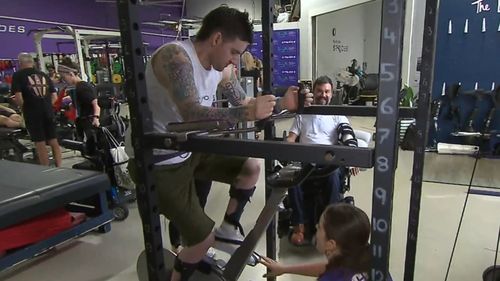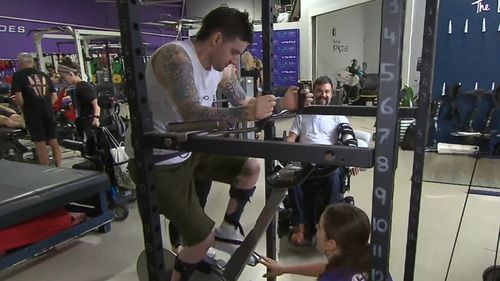Share this @internewscast.com
This pioneering method employs nerve cells from the nasal passages to mend injured spinal cord cells, with the potential to restore mobility and autonomy to those affected by paralysis.
Tony Pinto, a former social media influencer, experienced a life-altering accident two and a half years ago that left him quadriplegic.

Pinto dislocated his C5 vertebrae diving into a shallow pool and now required round-the-clock care.
Eager to regain his self-sufficiency, Pinto moved from the United States to take part in the trial, which includes a unique cell transplant technique.
“We extract specialised cells from the nose through a simple nasal biopsy,” Professor James St John from Griffith University said.
“These cells are then purified and transformed into a cellular nerve bridge, which is subsequently transplanted into the spinal cord.”
This “nerve bridge” acts as a conduit, reconnecting damaged cells and facilitating the potential for functional recovery.
Post-surgery rehabilitation plays a pivotal role in the trial’s success.
Participants, like Pinto, will undergo an intensive eight-month program, dedicating five days a week to rebuilding strength and regaining sensation.
Genny Kroll-Rosen, associated with the disability services and rehab group Making Strides, stated that the significant effects of this treatment could extend beyond just restoring physical movement.
“This isn’t just about being able to move a finger,” she said.
“It’s about the transformative power of independence—the ability to zip up a jacket, roll over in bed, or embrace loved ones.”
The Perry Cross Spinal Research Foundation is at the forefront of this endeavour, driven by a mission to instill hope in those living with paralysis.
“We must create hope for people, the hope that one day we can transform their lives,” Perry Cross said.
For Tony Pinto, this trial represents more than just the prospect of walking again.
“It’s so much more than just walking again,” Pinto said.
“It’s about independence and quality of life.”














